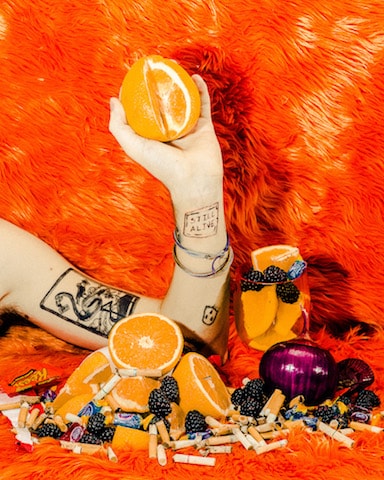MERMAIDS & UNICORNS
ONLINE EXHIBITION
Curated by: Carlotta Meyer, Benoit Palop and Tina Sauerländer
Presented by: peer to space
Exhibition design by: Emilie Gervais
ARTISTS
Anthony Antonellis, Katharina Arndt, Kim Asendorf, LaTurbo Avedon, Domenico Barra, Aram Bartholl, Alexandra Baumgartner, Aviv Benn, Jonas Blume, John Breed, Gaby Cepeda, Gregory Chatonsky, Monica Cook, Shyra De Souza, Paula Doepfner, Grigori Dor, Mark Dorf, Rose Eken, Ornella Fieres, Katherine Frazer, Bea Fremderman, Carla Gannis, Emilie Gervais, Hobbes Ginsberg, Armin Keplinger & Andreas Greiner, Karonlina Halatek, Claudia Hart, Gregor Hildebrandt, Faith Holland, Hideyuki Ishibashi, Everett Kane, Erica Lapadat-Janzen, Geoffrey Lillemon, Gretta Louw, Douglas Repetto & LoVid, Alexandre Madureira, Michal Martychowiec, Claudia Maté, Rosa Menkman, Eva Papamargariti, Sabrina Ratté, Kent Rogowski, Manuel Rossner, Cecilia Salama, Alfredo Salazar-Caro, Nicolas Sassoon, Ann Schomburg, Robert Seidel, Berndnaut Smilde, Mathieu St-Pierre, Charlie Stein, Katie Torn and Miriam Vlaming.
ABOUT
Not only the physical world exists today. There is an equivalent one that we only perceive with our eyes. Yet this on-screen world is real. Everything is possible there; unicorns and mermaids exist and become part of our lives. But the world in the digital realm is very fragile. At some point in the future, it may no longer be accessible; its devices and hardware will become purely objects. The online exhibition Mermaids & Unicorns examines how today’s artists working in varied media explore the phenomenon of evanescence. They reflect on the pictorial history of vanitas and evanescence, the concept of absence in the visual present or the topic of “digital obsolescence” in today’s post-digital living conditions.
The term “evanescence” evokes the concept of the memento mori, a reminder of death as a part of life applicable to every human unable to be changed or controlled. However, memento mori suggests a life constantly remembering this fact. Throughout all époques, artists visualized this topic in medieval danse macabre images or baroque vanitas still lives alternating between beauty and decay. Motifs like skeletons, skulls, hour glasses, masks, coins, scores, candles, fruits, flowers, flies, spiders or other insects served to symbolize evanescence. The composition and contextualization of the elements created their meaning.
In the 20th century, cubist still lives dissolved and deconstructed objects. Abstraction showed evanescence as something fleeting, too. Painting stopped serving as a means of preserving (the beauty of) reality. From then until now, evanescence expressing the ephemerality and fragility of things adopted new visual codes. Many artists today work with materials which embody temporality and fragility, such as ice, wax, wood or other natural materials and build fragile short-lived, time-based sculptures which tend to dissolve or installations underlining the transient state of things and life.
Vanitas imagery is about visually depicting something that is not actually there. Further, the depicted objects from the real world are not tangible, as they too are just a depicted representation. This also applies to the essence of the digital, the internet and everything we perceive on our screens. In the Digital Age, evanescence is attributed a brand new meaning, as ephemerality lies in the medium itself. The visual beats the material.
Thinking about the future, digital obsolescence becomes very relevant in terms of evanescence, too. The rapid evolution of computer hardware, software and operating systems lacks sustainability and therefore generates data loss very quickly. Data has no physical form, but storage media do. Think about archeological excavations in the distant future, the hardware — from floppy discs to IPhones — will become purely objects, as stored data will be inaccessible. So, the current digital era can be considered a period of transience. Facing this fact now and being unable to change it, we fear our own ephemerality and death, which results in focusing on our “life is now”. We generate an enormous data flood on our Facebook timelines, Tweets, feeds, Snapchat, and photo roll. We suffer from FOMO, depression, burn-out, emotional or anxiety disorders.




































